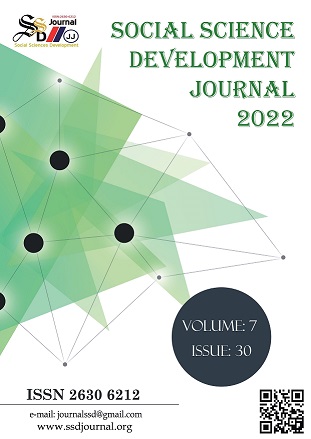WATER LITERACY LEVELS OF HIGH SCHOOL STUDENTS IN SCIENCE AND ART CENTERS (ISTANBUL EXAMPLE)
DOI:
https://doi.org/10.31567/ssd.606Keywords:
Water literacy, Science and Art Center, Water conservation, Water awareness, Water sensitivityAbstract
Global climate change or global warming has become a current issue that everyone is talking about
in recent years. In the Paris Agreement in 2015, projections were shared that there has been an
increase of 1°C in global surface temperatures in the last century and that these figures will reach
2°C before the 2050s if measures are not taken. The increase in global surface temperatures, the
decrease in precipitation amounts and the visible shifts in the precipitation regime have started to
cause serious water problems. Problems such as water shortage, lack of clean and sufficient water
and water scarcity, which have been identified with some African countries in the past years, will
perhaps be referred to as problems for some regions in Turkey in the coming years. It is clear that
the problems of water scarcity and access to clean water will increase in the future. For this reason,
individuals and societies with high water literacy levels are needed for the sustainable use of water
resources and their delivery to future generations. If a society with a high water literacy level cannot
be built, water shortages due to increasing temperatures and problems due to water deprivation
seem to be very close. The aim of this study is to determine the water literacy levels of high school
students studying at Science and Art Centers (BİLSEM) in Istanbul. The study was conducted with
129 high school students enrolled in BİLSEMs in Istanbul, using the Water Literacy Scale
developed by Sözcü and Türker (2020). The reliability coefficient of the water literacy scale used in
the study was calculated as .879. The scale consists of three sub-dimensions and 30 items. As a
result of the research, it was determined that female students' water saving and water awareness
levels were higher than males. No statistically significant difference was found between grade level
and academic grade point averages and water literacy levels. It was determined that there was a
difference in the water saving sub-dimension according to the mother's education level variable.
Based on these results, the necessity of conducting a strong educational process starting from the
family is emphasized in order to build a water literate society.




